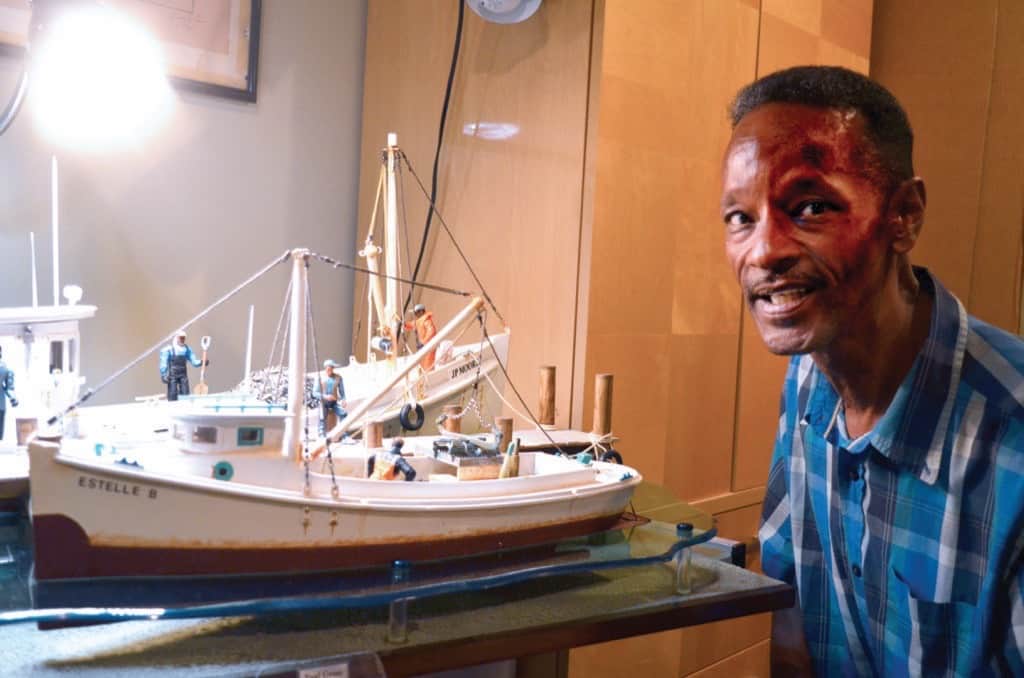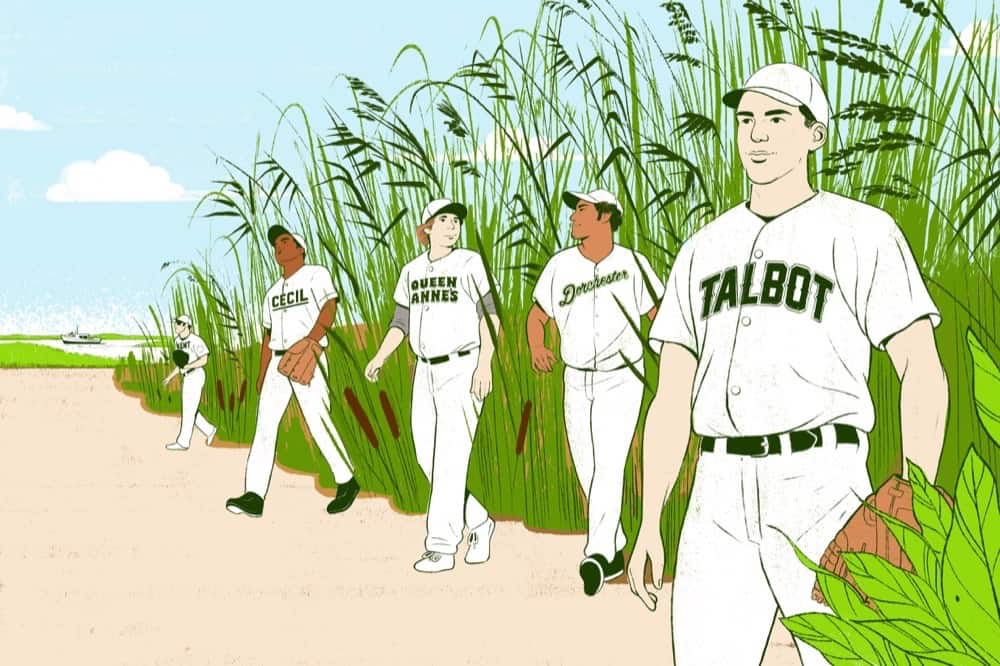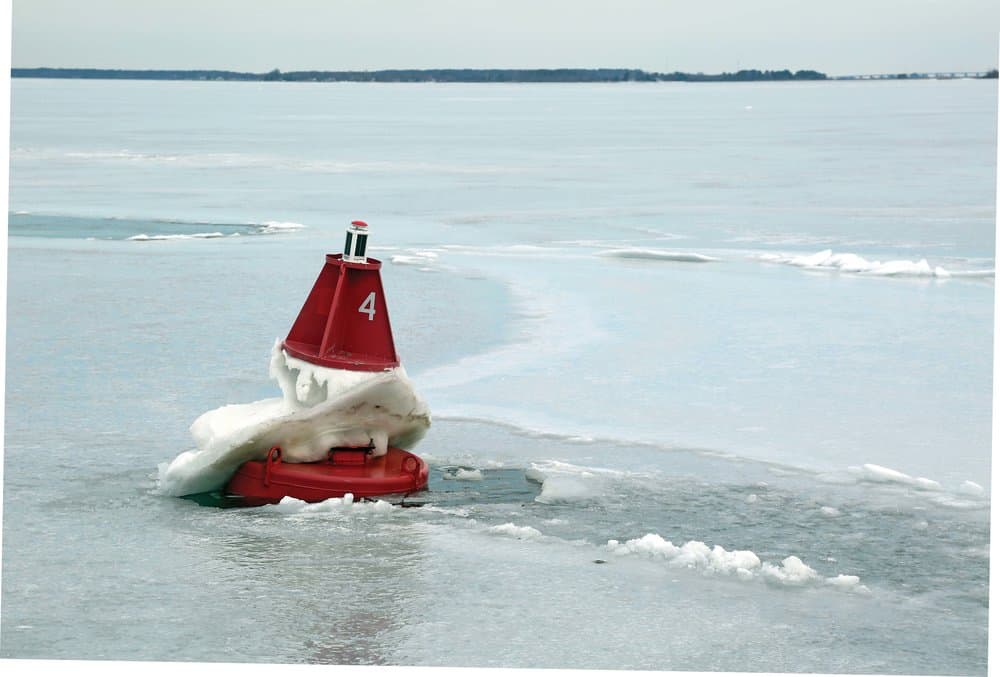There’s nothing more exciting to a Chesapeake Bay angler than to see working birds in the distance. It almost always means good fishing is ahead.
“Find the bait and you’ll find the fish,” is a phrase my father taught me, and one I’ve since passed on to my children and grandchildren. It especially holds true here on the Chesapeake Bay. Running and gunning with my family in a fast, open boat, while scanning the horizon for swooping and diving birds, is one of my favorite ways to spend a day on the water.
When rockfish are actively feeding, they push baitfish such as bay anchovies and menhaden up to the surface. Sometimes the fish smash the hapless minnows a foot or more into the air. Frenzied seabirds get so worked up that they’ll even take the bait right out of a fish’s mouth. Casting a brightly colored lure into the melee will almost always catch fish.
Throughout the year I host fishing seminars in the Chesapeake Basin to give tips and advice on how to target rockfish. At one of my recent seminars, an angler asked for my thoughts on the most important environmental factors that contribute to good fishing. I rattled off four of them: bait fish, water quality, habitat and the abundance of gamefish. It’s impossible to look at any one factor as more important than the others because they are so intertwined.
Really good fishing in the Chesapeake Bay depends on the health of the entire ecosystem. That’s why I follow the University of Maryland Center for Environmental Science’s annual Chesapeake Bay report card with such interest. The goal of the report is to evaluate all of those factors, and more, when assessing the health of the Bay.
This year, the center gave my treasured estuary an overall grade of C. That’s average—better than failing, but hardly cause for celebration. That’s why I was surprised to hear the cheers coming from some of our government agencies and environmental support groups. I know we’ve made progress, especially in areas like improved water clarity and bay grass growth, but a C is so far from where we need to be.
It’s right to take credit for improvements, but instead of cheering, we should see this average grade as a reminder of the challenges we face, and how much more work there is to be done.
At the same time, the report card gave Chesapeake Bay fisheries a surprisingly high grade of 90 percent, despite a consensus among recreational fishermen that the spring 2017 trophy striped bass season was the worst in recent memory. Many anglers I talk with say big fish catches have been declining steadily in the past decade, which makes the report card’s failure to evaluate the strength of the menhaden population—the stripers’ main food source— all the more puzzling.
It’s inconceivable that an otherwise comprehensive assessment of the Bay’s ecosystem would not include an accounting for what has been described as “the most important fish in the sea.” Menhaden are the preferred forage fish for mature rockfish, and a vital component of the Chesapeake Bay’s ecosystem. In addition, menhaden are literally water cleaning machines. An adult menhaden can filter 2.4 gallons of water every minute while eating plankton that causes algae blooms.
The link between healthy and abundant menhaden stocks and plentiful rockfish and other popular sportfish is undeniable, which is why sportfishing groups and anglers have been pushing federal and state fisheries managers for more than a decade to consider regulations that would help ensure abundant menhaden and other important forage stocks.
The Atlantic States Marine Fisheries Commission (ASMFC), the organization that manages our shared coastal fisheries resources, is currently considering an ecosystem management amendment for menhaden. A new approach would factor in the menhaden’s critical role in the ecosystem as prey and efficient water cleaners. This is an effort that recreational anglers up and down the East Coast should support.*
The effort to conserve menhaden has been a long and arduous process, but nearly every indication of success has been undercut by constant pressure to increase the harvest for menhaden and striped bass. Managers must move beyond this one-step-forward-two-steps-back approach to ensure a brighter future for baitfish, the species they support, and the Bay’s fishermen.
Even as the ASMFC acknowledged that the spawning stock biomass for striped bass is down, commissioners were faced with a proposal to increase the rockfish harvest. While that effort failed, it illustrates the clear pressure on the commission to increase harvests, even when the news on fish populations isn’t all that great.
If we don’t stop looking past short-term economics and do a better job of protecting our big spawning-class rockfish and the bait they eat, we are headed for disaster.
It’s time to get serious about our Chesapeake Bay ecosystem and the shared resources we all enjoy. The Bay is being challenged on every front. My hat is off to the University of Maryland for the work they’re doing in evaluating the health of the Bay, but you won’t find me celebrating the overall C-grade or even that debatable A-score for fisheries.
We can and must do better.
This article was first published on the Theodore Roosevelt Conservation Partnership (TRCP) blog. We republish it here with permission. The TRCP is a venerable non-profit working to guarantee all Americans quality places to hunt and fish. The organization helps create federal policy and funding solutions by uniting 54 partners, including some of the biggest names in hunting, fishing and conservation, and amplifying the voices of sportsmen and women in service of Theodore Roosevelt’s conservation legacy.



